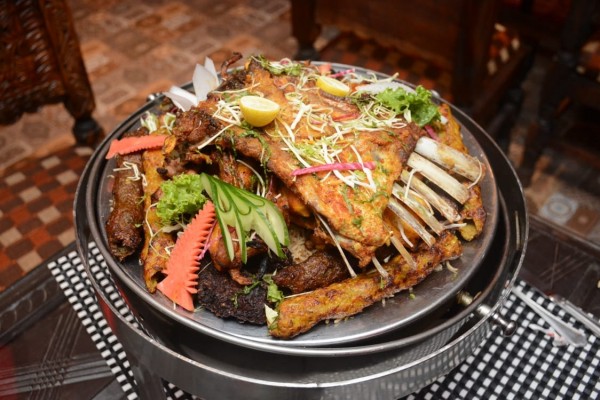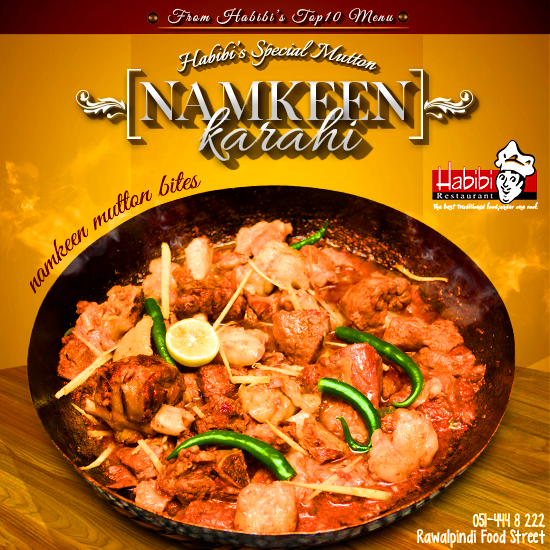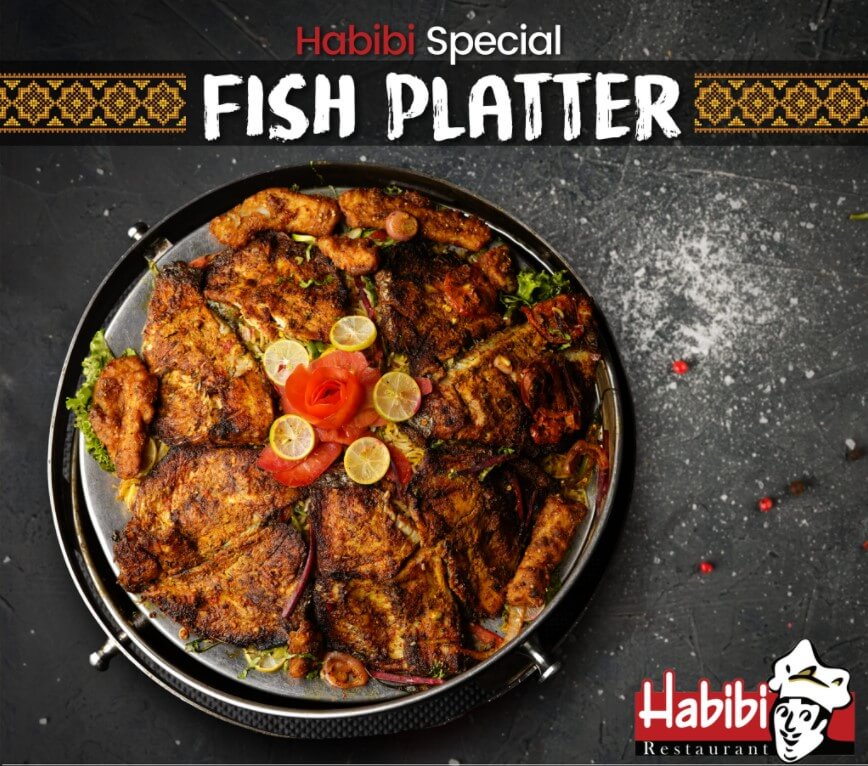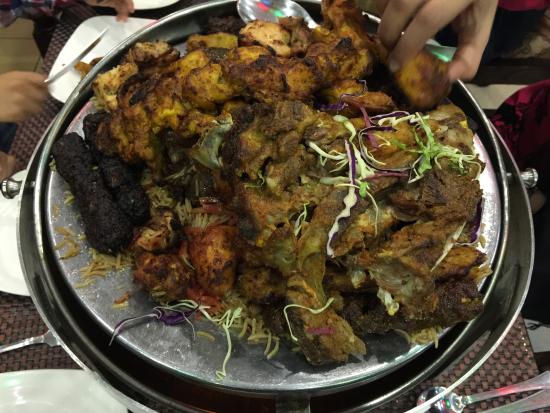Welcome to the world of Middle Eastern cuisine, where the flavors are vibrant, the aromas captivating, and the traditions steeped in history. One dish that embodies the essence of this rich culinary heritage is the beloved Habibi platter. A feast for the senses, a Habibi platter is a delightful assortment of mouthwatering delicacies that will transport you to the heart of the Mediterranean. In this article, we invite you to explore the wonders of a traditional Habibi platter, from its tantalizing ingredients to its health benefits and even show you how to create your own. Let’s embark on a culinary journey that celebrates the art of sharing and the joy of savoring delicious food.

Are There Any Vegetarian Options Available in a Habibi Platter?
Absolutely! Middle Eastern cuisine has a wide array of vegetarian delights, making it a haven for plant-based food lovers. A traditional Habibi platter often includes falafel, a mouthwatering blend of ground chickpeas, herbs, and spices, deep-fried to perfection. This protein-packed delight is a staple in vegetarian Habibi platters. Additionally, you’ll find an abundance of fresh vegetables, tangy salads, and flavorful dips such as hummus and baba ganoush. With these options, vegetarians can delight in the flavors of a Habibi platter while savoring the rich culinary traditions of the Middle East.
Can You Suggest Some Authentic Middle Eastern Side Dishes to Accompany a Habibi Platter?
Certainly! Middle Eastern cuisine is renowned for its diverse and delicious side dishes that perfectly complement a Habibi platter. Here are a few authentic options:
- Tabouli Salad: A refreshing salad made with bulgur wheat, parsley, mint, tomatoes, and a zesty dressing.
- Grilled Kebabs: Skewers of succulent meat or vegetables marinated in aromatic spices and grilled to perfection.
- Couscous Salad: A light and fluffy salad made with couscous, mixed vegetables, herbs, and a tangy dressing.
- Tzatziki Sauce: A creamy and cooling yogurt-based sauce infused with garlic, cucumber, and dill.
These side dishes add depth and variety to your Habibi platter, creating a well-rounded culinary experience that will leave you craving more.

What are the Health Benefits of the Ingredients Typically Found in a Habibi Platter?
The ingredients in a traditional Habibi platter offer more than just delightful flavors; they also bring a host of health benefits to the table. Let’s explore some key ingredients and their health advantages:
- Chickpeas: Rich in protein and fiber, chickpeas promote digestive health, provide sustained energy, and support heart health.
- Fresh Vegetables: Packed with vitamins, minerals, and antioxidants, vegetables contribute to overall well-being, strengthen the immune system, and support healthy digestion.
- Olive Oil: A staple in Mediterranean cuisine, olive oil is a source of healthy fats, antioxidants, and anti-inflammatory properties, offering numerous benefits for heart health and overall longevity.
- Herbs and Spices: The vibrant array of herbs and spices used in Middle Eastern cuisine provides an abundance of antioxidants, anti-inflammatory compounds, and unique flavors that enhance overall health and well-being.
By enjoying a habibi platter, you not only treat your taste buds but also nourish your body with wholesome ingredients that contribute to a healthy lifestyle.

How Does a Habibi Platter Differ from Other Mediterranean or Middle Eastern Dishes?
While Mediterranean and Middle Eastern cuisines share some similarities, each has its own unique characteristics and flavors. A Habibi platter specifically showcases the diverse flavors of Middle Eastern cuisine, with its signature dishes such as falafel, hummus, shawarma, and more. The harmonious blend of spices, herbs, and fresh ingredients gives Habibi platters their distinct taste. On the other hand, Mediterranean cuisine encompasses a broader culinary tradition, incorporating dishes from countries such as Greece, Italy, and Spain. While there may be some overlap in ingredients and flavors, a Habibi platter offers a focused and authentic representation of Middle Eastern cuisine.

Are There Any Variations of Habibi Platters from Different Regions?
Indeed! Middle Eastern cuisine is incredibly diverse, with each region adding its own unique twist to traditional dishes. Habibi platters may vary in terms of specific ingredients and flavors depending on the region. For example:
- Lebanese Habibi Platter: Often characterized by the freshness of ingredients and the vibrant flavors of herbs and spices, Lebanese Habibi platters may feature dishes like tabouli salad, baba ganoush, and grilled kebabs.
- Egyptian Habibi Platter: Egyptian habibi platters may showcase dishes like kosher, a flavorful mix of lentils, rice, and pasta, alongside traditional dips and spreads like tahini and ful medames.
- Syrian Habibi Platter: Syrian Habibi platters may highlight dishes like muhammara, a spicy red pepper, and walnut dip, alongside regional specialties such as fattoush salad and shawarma.
These regional variations offer a glimpse into the culinary diversity and cultural richness of the Middle East, adding even more excitement and exploration to your Habibi platter experience.
Can You Provide a Step-by-Step Guide on Assembling a Visually Appealing Habibi Platter?
Certainly! Creating a visually appealing Habibi platter is a work of art that delights both the eyes and the taste buds. Here’s a step-by-step guide to help you assemble an Instagram-worthy Habibi platter:
- Choose the Right Platter: Start by selecting a large, shallow platter that will showcase the vibrant colors and textures of your dishes.
- Arrange the Main Components: Begin by placing the falafel, hummus, and shawarma at the center of the platter. These are the star attractions of your Habibi platter.
- Add Colorful Salads: Surround the main components with vibrant salads such as tabouli, couscous, or fattoush. These add freshness and visual appeal to your platter.
- Enhance with Dips and Spreads: Place small bowls or ramekins of baba ganoush, tahini sauce, and tzatziki around the platter. These creamy dips add a delightful contrast of flavors and textures.
- Garnish with Fresh Herbs: Sprinkle fresh herbs like parsley, mint, or cilantro over the dishes to add a pop of color and enhance the aroma.
- Finish with Za’atar and Olive Oil: Drizzle a generous amount of olive oil over the platter and sprinkle za’atar seasoning for an irresistible final touch.
Remember, creativity is key! Feel free to experiment with different arrangements, colors, and textures to create a visually stunning habibi platter that will impress your guests.

What are Some Alternative Names for a Habibi Platter in Different Countries?
While “Habibi platter” is a commonly used term, different countries, and regions may have their own names for this delightful feast. Here are some alternative names you may encounter:
- Mezze Platter: Used across the Middle East and Mediterranean, the term “mezze” refers to a selection of small dishes, including those found in a Habibi platter.
- Mazza Platter: Commonly used in Egypt and some parts of the Levant region, “Mazza” refers to a similar concept of a shared platter with a variety of small dishes.
- Tapas Platter: In Spain, “tapas” are small, flavorful dishes that are often shared, akin to the concept of a Habibi platter.
These alternative names highlight the cultural diversity and local influences that shape culinary traditions around the world.

Are There Any Gluten-Free Options in a Habibi Platter?
Absolutely! Middle Eastern cuisine offers a plethora of gluten-free options for those with dietary restrictions or preferences. Some gluten-free components commonly found in a Habibi platter include:
- Falafel: Made primarily from chickpeas and herbs, falafel is naturally gluten-free.
- Hummus: A smooth and creamy dip made from chickpeas, tahini, and olive oil, hummus is a gluten-free delight.
- Baba Ganoush: This smoky eggplant dip is gluten-free and bursting with flavor.
- Fresh Vegetables: The colorful assortment of fresh vegetables, such as cucumber, tomato, and lettuce, are naturally gluten-free and add a refreshing crunch to your platter.
With these gluten-free options, everyone can partake in the joy of a Habibi platter without any concerns.

What are the Main Ingredients Used in a Traditional Habibi Platter?
A traditional Habibi platter showcases a captivating range of ingredients that come together harmoniously to create an unforgettable dining experience. Some main ingredients you’ll find in a Habibi platter include:
- Falafel: Ground chickpeas, herbs, and spices formed into delightful patties and deep-fried to perfection.
- Hummus: A creamy blend of chickpeas, tahini (sesame paste), garlic, lemon juice, and olive oil, creating a smooth and flavorful dip.
- Pita Bread: Soft and fluffy bread rounds, perfect for scooping up the various components of the platter.
- Shawarma: Succulent strips of marinated and slow-cooked meat (such as chicken, beef, or lamb) infused with aromatic spices.
- Tabouli Salad: A refreshing combination of bulgur wheat, parsley, mint, tomatoes, onions, and lemon juice, offering a burst of freshness.
- Baba Ganoush: A smoky and creamy dip made from roasted eggplant, tahini, garlic, lemon juice, and olive oil.
These ingredients form the foundation of a traditional Habibi platter, inviting you to savor the authentic flavors of the Middle East.

Leave a Reply